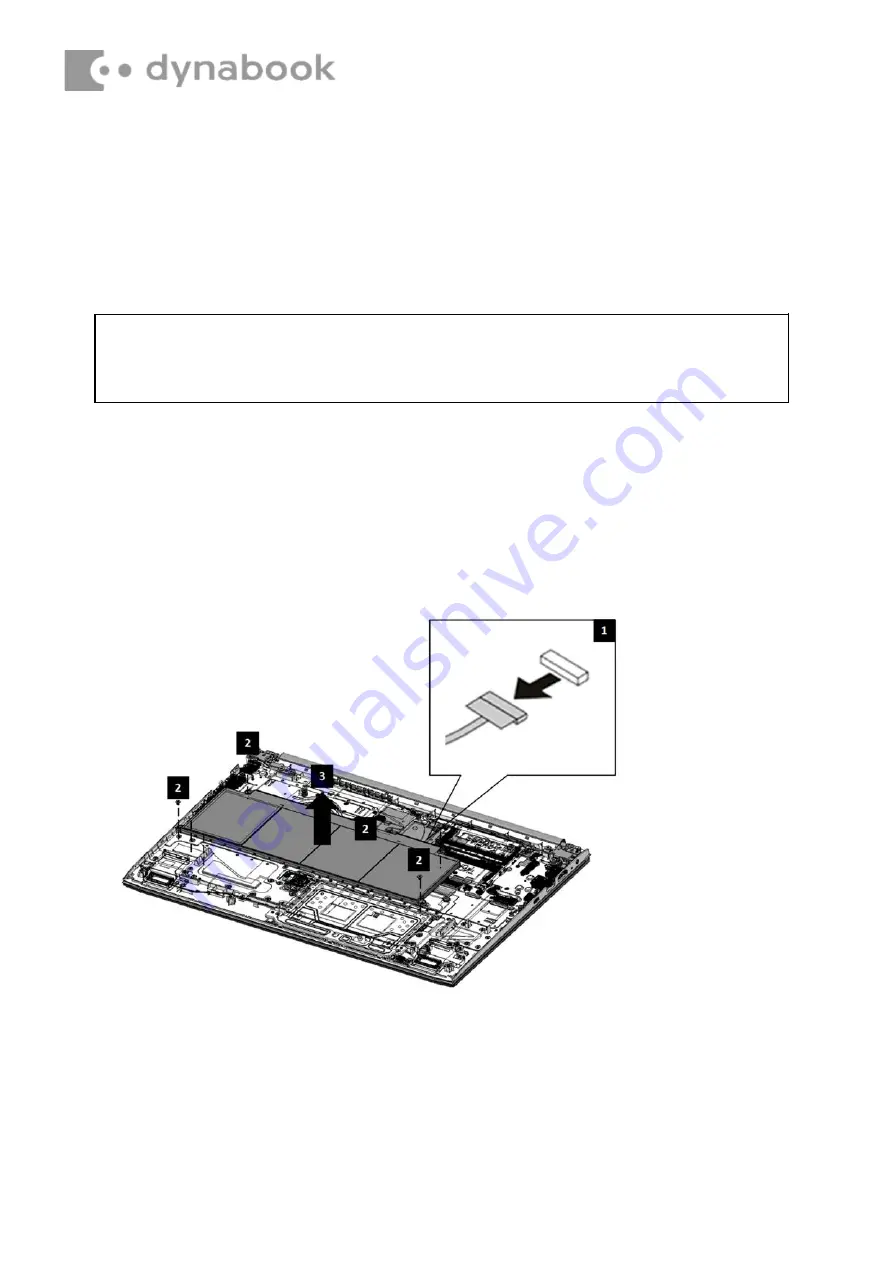
4.3
Battery Pack
Removing the battery pack
Remove the battery pack according to the following procedures and Figure4- 2.
1.
Detach the Battery connector
□
,1.
2.
Remove the four M2x3 screws
□
,2 .
3.
Remove the battery pack
□
,3.
Figure4- 2 Removing the Battery Pack
CAUTION:
When handling the battery pack, use cares not to short circuit the terminals. Do not drop, hit, twist or
bend the battery pack. Do not scratch or break up their casing.
Summary of Contents for Satellite C50-K
Page 12: ...Figure4 3 Removing the Fan and thermal module Figure4 4 Removing the w lan cable ...
Page 14: ...Figure4 6 Checking the Thermal Pad on Thermal module ...
Page 30: ...Figure4 17 W LAN edp Cables Routing Channel Figure4 18 Removing the LCD Assembly ...
Page 35: ...Figure4 20 Removing the Panel Adhesive Figure4 21 Removing the Panel Assembly ...
Page 38: ...Figure4 24 Removing the Release Paper of Panel Adhesive Figure4 25 Panel assembly explanation ...










































